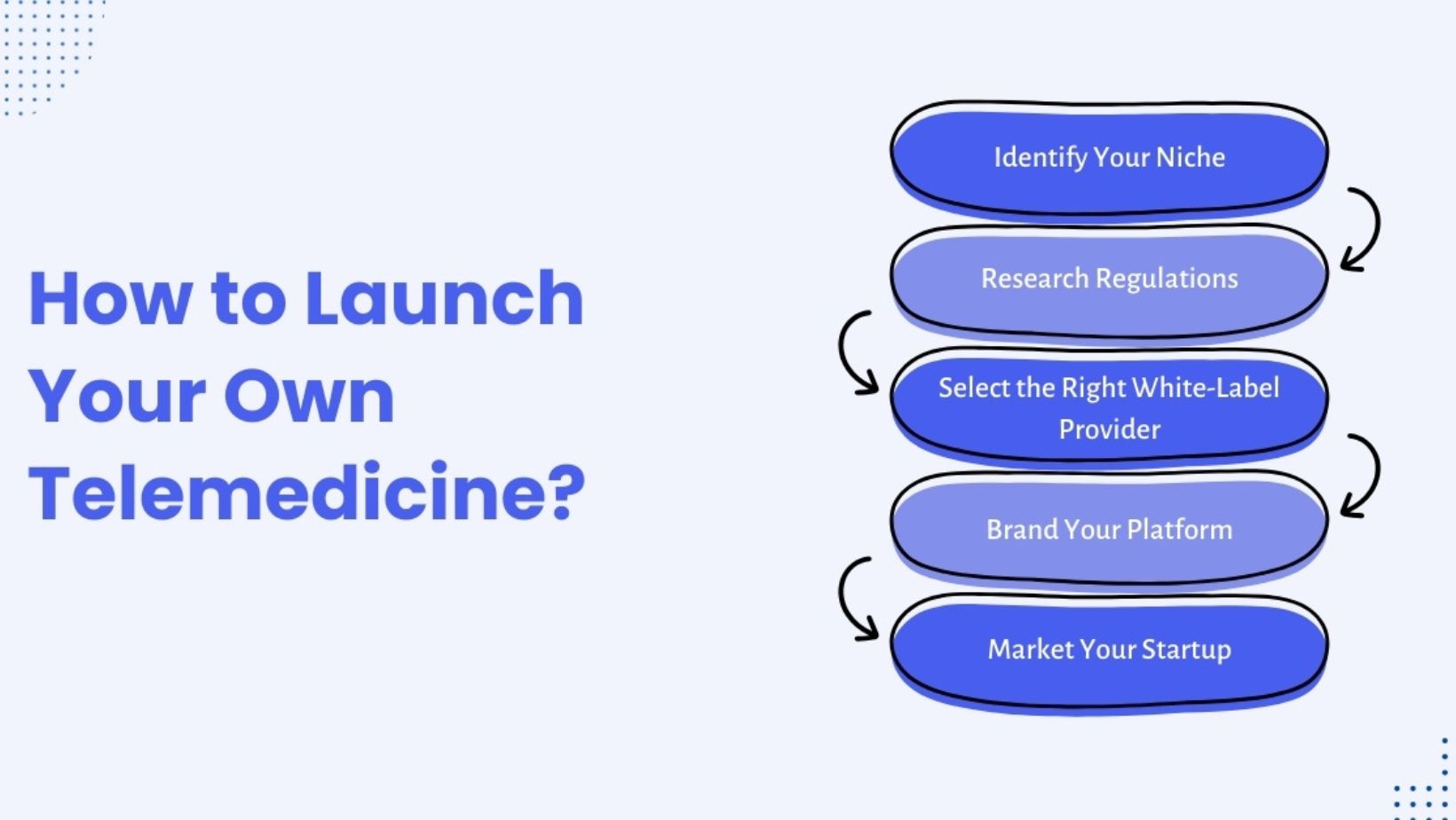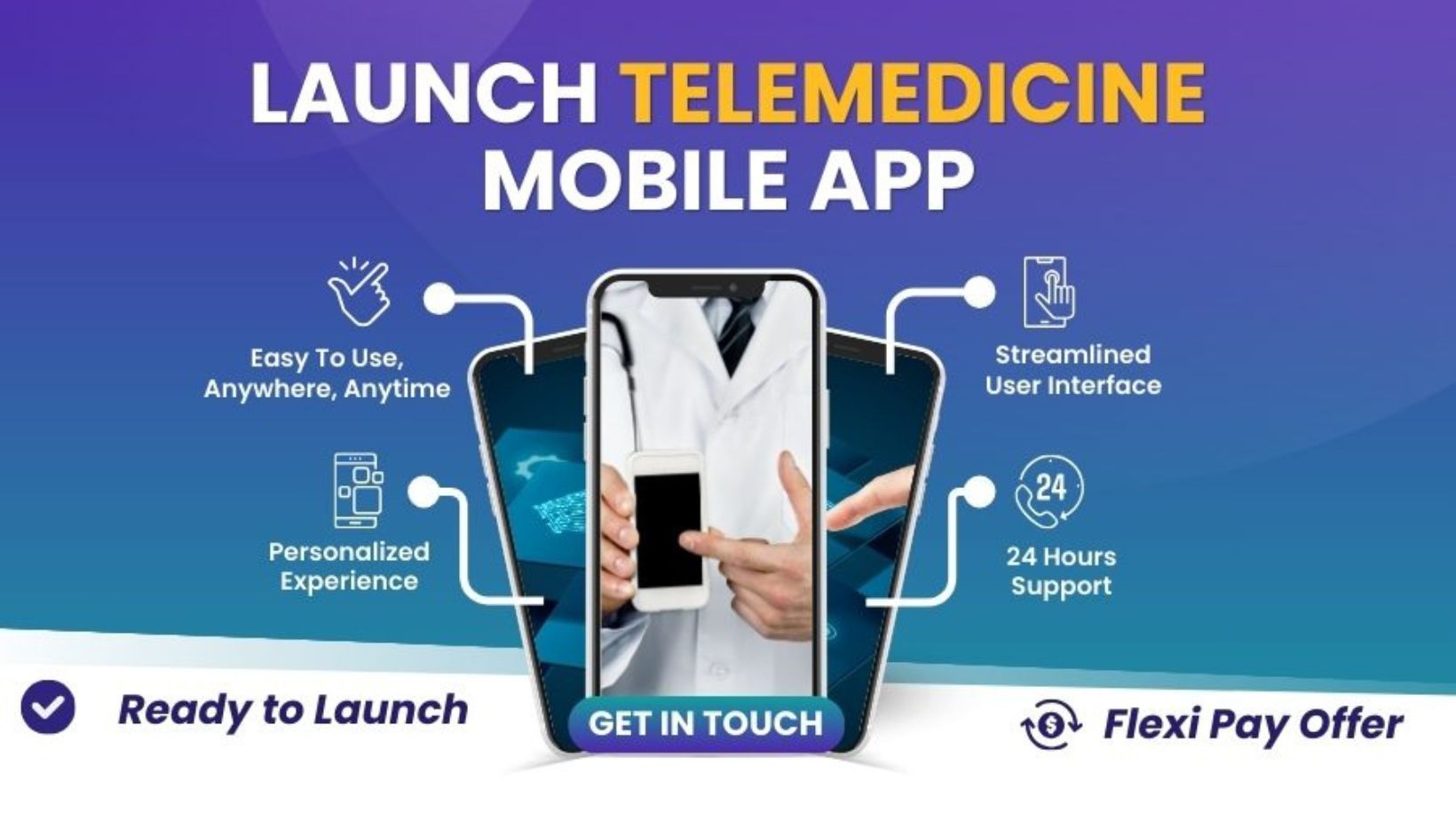
Telemedicine isn’t only revolutionizing healthcare companies; it’s also opening doors for SaaS and B2B startups far beyond the hospital walls. If you run a tech startup in 2025, you’ve seen the buzz around digital health. You might be asking, “Can we get a piece of that telemedicine boom?” The answer is a resounding yes – through white label telemedicine. This concept allows a SaaS or B2B company to offer telehealth services under its own brand without developing the entire system from scratch. In essence, you partner with a telehealth tech provider that works behind the scenes while you present the service as your own. Even non-traditional players – from retail chains to insurance platforms – are jumping in, expanding into telehealth by partnering with technology providers.
In this article, we’ll explore how white label telemedicine can become a powerful new product line for startups.
Telemedicine Meets SaaS: What Does “White Label” Mean for You?
For a SaaS/B2B startup, white label telemedicine involves embedding a ready-made telehealth platform into your product under your brand. A telehealth vendor provides the core tech (video consultations, records management, infrastructure), allowing startups to offer virtual healthcare without building from scratch.
It’s similar to “banking-as-a-service,” where fintech startups utilize licensed back-end banking systems under their own brands. With telehealth-as-a-service, startups integrate external expertise and technology seamlessly into existing solutions.
Why use white label telemedicine?
- Clinic Software Integration: Quickly add branded telehealth features (like video visits) to existing clinic-focused software, enhancing competitive advantage without extensive development.
- Wellness App Enhancement: Fitness apps can embed telemedicine via SDKs, providing direct in-app nutritionist or doctor consultations, boosting user engagement and retention.
- Corporate Benefits Expansion: Employer benefit platforms easily incorporate telemedicine into their offerings, leveraging third-party tech and clinician networks under their brand.
- Niche Market Targeting: Startups targeting specific groups (truck drivers, international students) can rapidly deploy customized telehealth services using white label providers, freeing resources to focus on user acquisition.
Strategic Benefits for B2B Startups:
- New Revenue Streams: Introduce telehealth features as premium add-ons or new client acquisition tools, monetizing digital health trends without major business pivots.
- Competitive Edge: Offering integrated telehealth differentiates startups, creates customer stickiness, and positions businesses as innovative market leaders.
- Fast Market Entry: Quickly access the expanding global telehealth market without substantial development hurdles or compliance complexities, enabling immediate participation in industry growth.
- Built-in Compliance and Trust: White label platforms handle regulatory compliance (HIPAA, GDPR), data security, and clinical integrations, significantly reducing startup risks and liabilities.
- Synergy with Core Products: Seamlessly integrating telemedicine enhances existing solutions, improving overall product value and user experience, particularly in healthcare or fintech environments.
- Easy Scalability: Cloud-based telehealth solutions scale smoothly, requiring minimal infrastructure investment from startups. Growth can be incremental, aligning perfectly with SaaS models.
- Innovation Without Distraction: Outsourcing complex telehealth tech allows startups to focus resources on core products and innovation, leveraging external expertise to maintain competitive agility.
- Global Expansion Simplified: Multi-language support and configurable compliance settings allow startups to easily expand telehealth services across international markets, speeding global growth.
How Do the Business and Pricing Models Work?
When venturing into white label telemedicine as a startup, understanding the business model and pricing is crucial. How do you make money, and how do you pay your telehealth tech partner? Several models exist, and sometimes they’re combined. Here are common approaches, with insights on when each makes sense:
Pricing Model How It Works When to Use / Pros
Subscription (SaaS) You pay the telemedicine platform a subscription fee (monthly/annual) for access, and potentially charge your clients a subscription for the added service. For example, $X per month for up to Y consultations or users. Great for predictable costs. Easy to bundle into your existing SaaS pricing. Works well if usage is steady or if you want simplicity. You can mark up the cost and earn margin.
Pay-Per-Use The platform charges based on usage – e.g., a flat fee per consultation, or per minute of video, or per each provider account. You might pass this cost to your client or take a cut of each paid consult. Ideal for variable or low initial usage. You’re not paying much if few visits happen. Scales with success. Good for startups testing the waters or services where end-users pay per visit (you share revenue).
Tiered Plans The telehealth provider (and you to your clients) might offer tiered packages (Basic, Pro, Enterprise) with increasing features or usage limits. E.g., Basic allows 50 visits/month, Pro 200, etc., with corresponding fees. Aligns with SaaS norms. Lets small clients start low cost and upgrade as they grow. As a provider, you can upsell clients to higher tiers as their telemedicine needs expand. Flexible and user-friendly.
Revenue Share Rather than (or on top of) fixed fees, you agree to share a percentage of revenue from each telemedicine transaction with the platform provider. For instance, if a video visit costs $50 to the end-patient, the platform takes $10 (20%) and you keep $40 (which might include paying the clinician or your margin). Lowers upfront cost – you pay only when you’re making money. Aligns incentives: the platform succeeds when you succeed. Useful if the telehealth service is set up as a pay-per-use for end users. However, ensure the split still leaves you enough profit after paying providers, etc.
License or One-Time Fee In some cases, a provider might offer a one-time licensing fee for the software (often for on-premise solutions) or a large annual license, which you can use with no per-use charges. You then monetize however you want, keeping what you earn. Good for large scale or fixed deployments. For example, a big hospital chain might prefer a one-time license for unlimited use (and you, the startup, facilitate that deal). Startups might avoid this unless you have significant capital and a guaranteed client base, due to high upfront cost.
Challenges and Considerations
Entering telemedicine via white label is exciting, but it’s not without challenges. Here are some things B2B startups should keep in mind and proactively manage:
- Integration Effort: While you’re not building telehealth from scratch, you still need to integrate it seamlessly into your product. This could involve using APIs, embedding widgets or iframes, setting up single sign-on (so users don’t juggle logins), and making the look-and-feel match your UI. Allocate developer time for this and work closely with the platform’s tech support. A clunky integration can confuse users (“Why does this part of the app look different or ask me to log in again?”). Strive for a unified user experience.
- User Experience and Support: Offering telemedicine means you’ll likely be the first line of support when users hit an issue, even if the problem lies with the white label service. If a doctor’s video drops or a patient can’t upload an image, your company will get the call. So ensure the platform has reliable performance and that you have a support arrangement. You may even need to train your support staff on basic troubleshooting for the telehealth module, with clear escalation paths to the provider’s support if needed. Responsiveness is key because healthcare interactions are high-stakes.
- Data and Privacy Questions: Clarify how user data is handled. Will consultation records or videos be stored, and if so where and by whom? Make sure your privacy policy covers telehealth usage. Typically, the telemedicine provider will store sensitive health info on their secure servers, but as the face of the service you must ensure this meets your users’ expectations and legal requirements. Work out details like: can you get analytics (non-sensitive aggregates) from the telehealth usage to gauge engagement? Can you export data if you ever switch providers? These data ownership and portability questions are important for long-term strategy.
- Brand Reputation: When you put your brand on a telemedicine service, any failure of that service can reflect on you. Choose a partner with a strong track record. Do some due diligence: uptime history, references from other clients, perhaps even test it as a user. Also, ensure the clinicians (if provided by the platform) are qualified and vetted. If a patient has a bad medical experience, it could tarnish your brand even if the doctor was technically from the partner’s network. Essentially, you are marrying your reputation with the quality of the telehealth delivered, so pick a trustworthy partner and maintain oversight (for example, some startups do random quality checks on consultations or gather user feedback to pass to the provider).
- Regulatory Compliance on Multiple Fronts: You’ll have to consider regulations not just in software, but in healthcare delivery. Even if the platform is compliant, if you’re operating in multiple states or countries, ensure you (or the provider) handle clinician licensing (do doctors need to be licensed in the state/country of each patient?), prescription laws, and so on. Often the telehealth partner has this covered – e.g., they only supply doctors licensed where the patient is, etc. – but if your use case is novel, double-check. Also, if your startup is publicly claiming to offer healthcare, you might need certain certifications or at least disclaimers (for instance, clarifying you’re facilitating the service, not practicing medicine yourselves). Legal counsel in digital health can be invaluable here.
- Margin Management: Keep an eye on the profitability. If, for example, you are doing a revenue share model, ensure that after paying the telehealth provider and the clinicians, there’s enough left to justify the effort. Sometimes startups get excited to offer telehealth at low cost (or free) to gain users, but long-term, you need a sustainable model. Revisit your pricing to clients periodically, especially if the telemedicine usage skyrockets. The good news is that telehealth can actually reduce costs in many scenarios (cheaper than in-person infrastructure), but always run the numbers.
- Gradual Rollout and Feedback: It might be wise not to roll out the telemedicine feature to all users overnight. Perhaps start with a pilot group or a single client to iron out kinks. Gather feedback from both the end-users (patients, providers) and your B2B clients about the experience. Use that to tweak workflows or requests to the platform vendor. For instance, maybe users want a feature you didn’t initially enable – you could ask the provider if it’s available. Or you discover that, say, the workflow for scheduling a tele visit is confusing your particular user base; you might need to add a custom guide or tweak the UI if possible. Iterating early will help ensure when you offer it broadly, it’s a polished service.
Telemedicine Trends for the Next 3 Years (2025–2028) – A Global View
Looking ahead, what trends will shape white label telemedicine opportunities for startups in the near future? Here are some forecasts and how they could impact SaaS/B2B players globally:
- Soaring market adoption: Telehealth usage has skyrocketed from ~1% of medical visits pre-pandemic to ~17% by 2023, firmly establishing virtual care as a standard option. The global telehealth market is on track to reach around $636 billion by 2028, signaling robust demand for white-label telemedicine platforms as providers and insurers race to launch branded digital health services.
- Regulatory tailwinds: Healthcare regulators are solidifying long-term support for telemedicine by expanding virtual care access. Pandemic-era telehealth flexibilities (e.g. relaxed licensing and coverage restrictions) are increasingly being made permanent. These favorable policies lower barriers for SaaS startups, enabling easier multi-region rollouts and broader patient reach for B2B telehealth offerings.
- Advanced tech integration: Telemedicine platforms are rapidly integrating next-gen technologies to enhance care quality. AI-driven diagnostics, wearable/IoT health devices, and seamless EHR interoperability are becoming standard features, making virtual care more personalized and efficient. By 2025–2028, startups that leverage predictive analytics and smart automation (e.g. AI triage bots, remote monitoring alerts) can differentiate themselves with data-driven insights and improved outcomes.
- Hybrid and specialized services: Hybrid care models (blending virtual and in-person visits) are on the rise, optimizing efficiency and patient satisfaction. At the same time, telehealth is expanding into specialized niches – from tele-mental health to remote chronic-disease management – fueling demand for white-label platforms tailored to specific services and patient populations. These niches present growth opportunities for startups to innovate with custom features and deeper clinical integrations.
Conclusion: Seize the White Label Opportunity
Telemedicine has broken out of the confines of hospitals and made its way into apps and services across industries. For SaaS and B2B startups, this represents a chance to innovate and diversify. By embracing white label telemedicine, you’re effectively adding a whole new dimension to your business with manageable effort. You can bolster your value proposition, create new revenue, and align your brand with the future of healthcare – all while leaning on expert partners for the complex parts.














